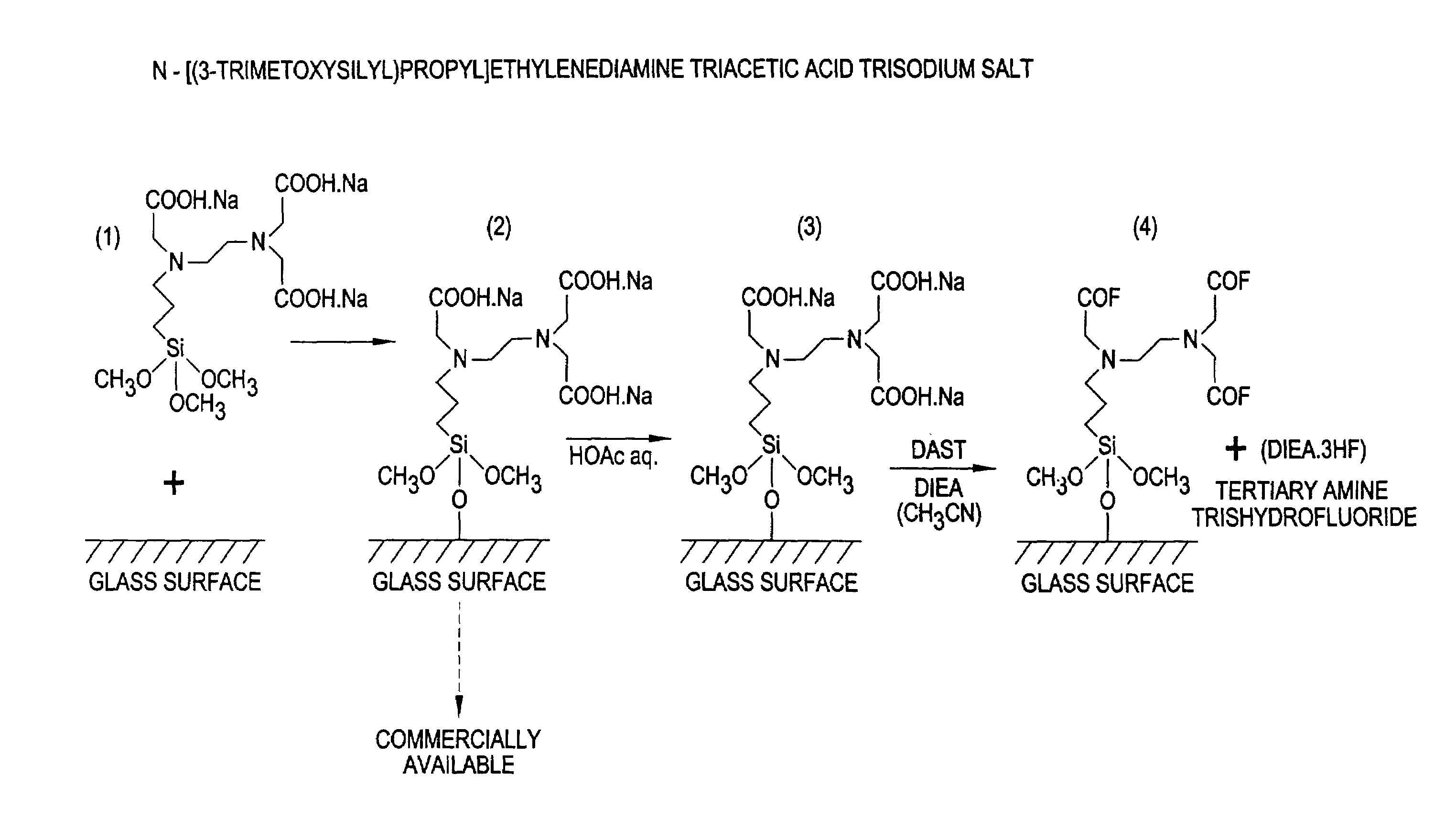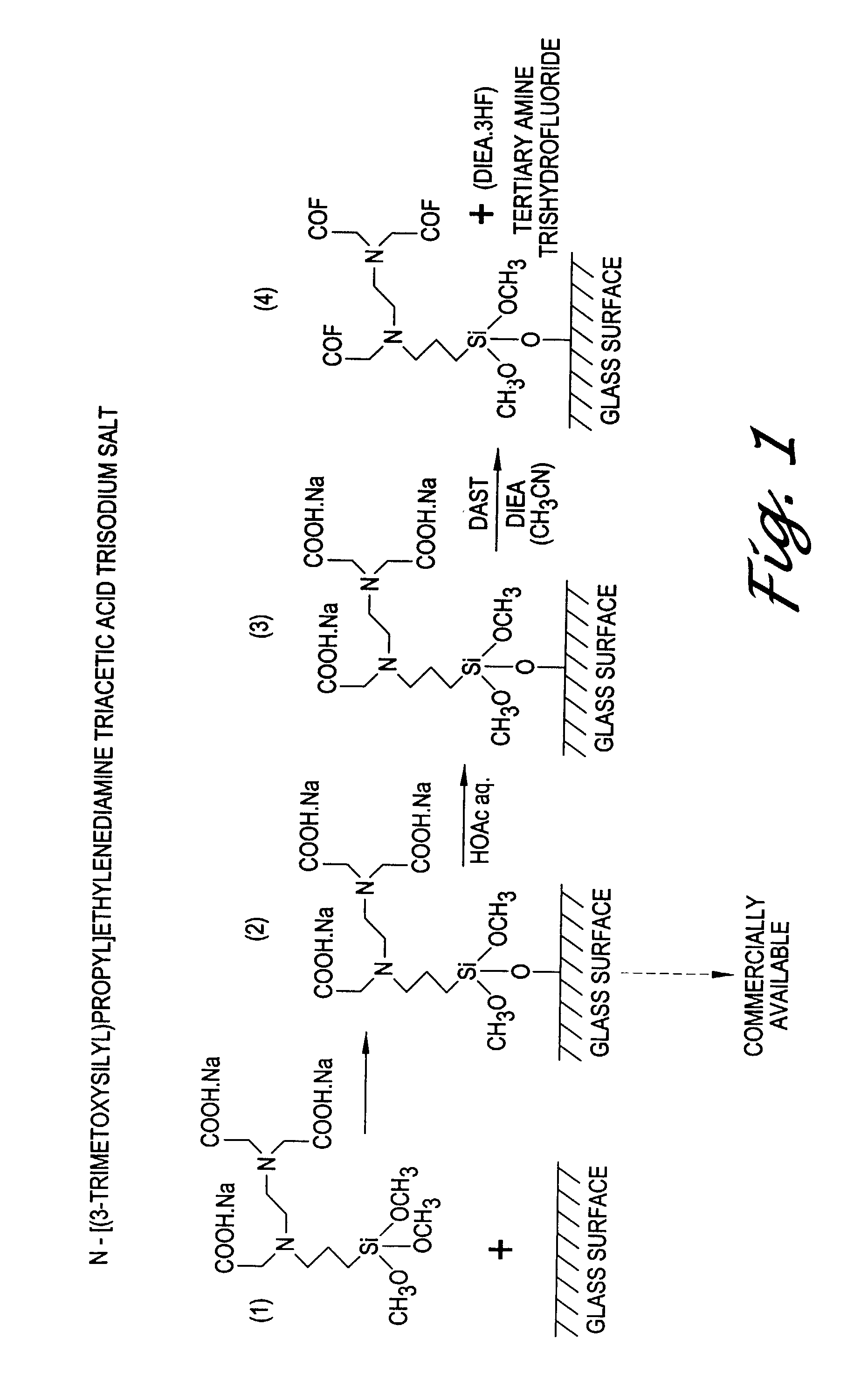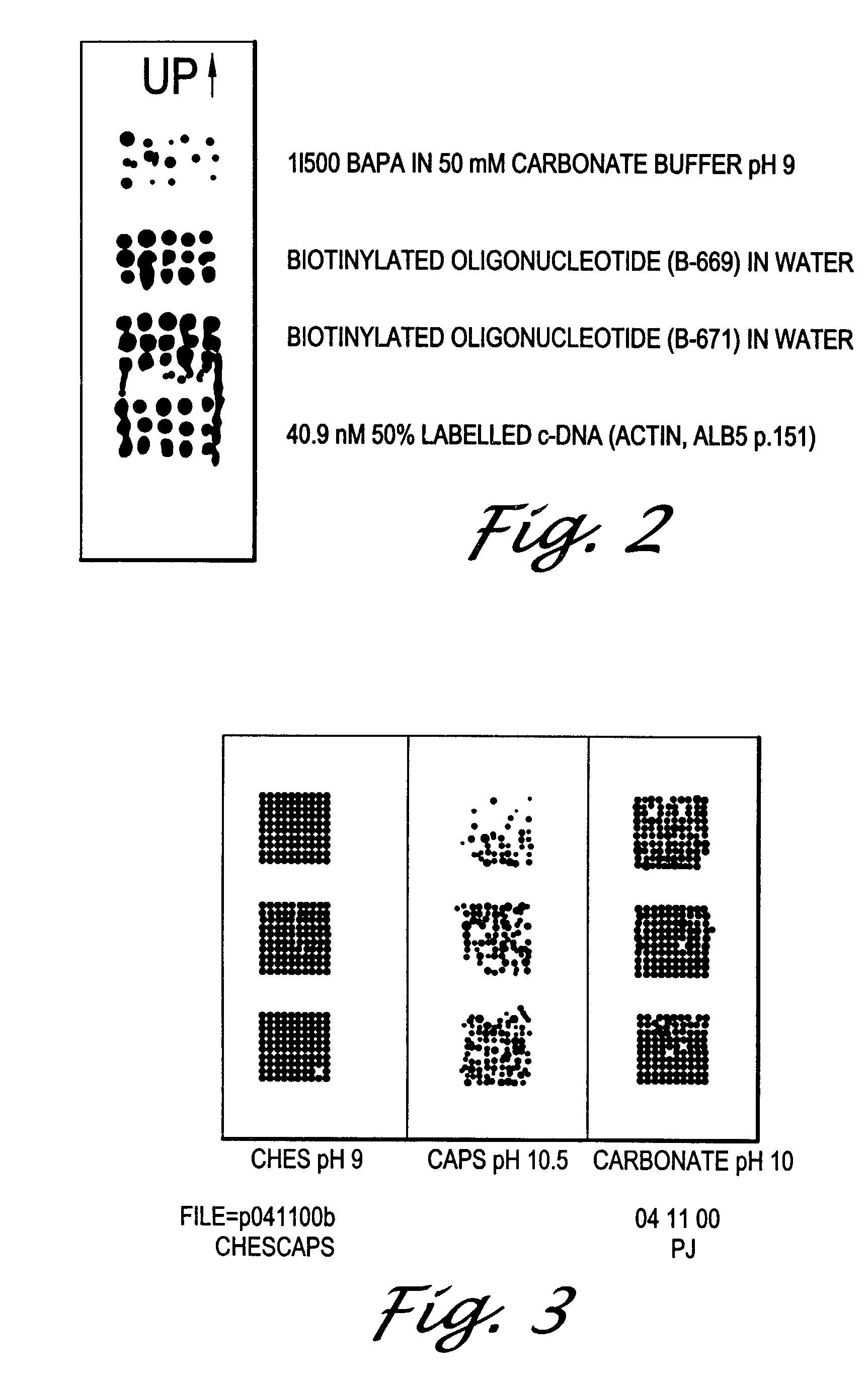Acyl fluoride activation of carboxysilyl-coated glass substrates
a technology of acyl fluoride and carboxysilyl, which is applied in the field of acyl fluoride activation of carboxysilylcoated glass substrates, can solve the problems of inability to provide sufficient stable immobilization of biomolecules and cells on the substrate, and inability to achieve precise array construction, stable at ambient conditions, and reasonable shelf life
- Summary
- Abstract
- Description
- Claims
- Application Information
AI Technical Summary
Benefits of technology
Problems solved by technology
Method used
Image
Examples
example 1
Activating Carboxysilyl Glass:
[0091]Carboxysilyl glass slides were prepared by immersing borosilicate glass microscope slides in a 2% aqueous solution of the N-[(3-trimethoxysilyl)propyl]-ethylenediamine triacetic acid trisodium salt reagent (United Chemical Technologies, Inc., Bristol, Pa.) with agitation at room temperature for two to three minutes prior to drying and curing at room temperature for 24 hours. Alternatively, pre-made carboxysilyl glass slides may be purchased from CEL Associates, Inc. (Houston, Tex.) or another supplier. Residualsodium salt was neutralized with excess acetic acid in aqueous solution (10% v / v for 10 minutes) to free the carboxyl groups and washed by immersion three times in water. The slides were dried under a strong stream of argon gas (˜90 psi), although low speed centrifugation may be used more effectively. The dried, neutralized slides were subsequently activated by immersion in a solution of an excess of DAST and DIEA in dry acetonitrile (stored...
example 2
[0093]Covalent Attachment of Oligonucleotides and cDNA to the Activated Slides of the Present Invention.
[0094]An activated glass slide prepared in accordance with Example 1 was hand-spotted with solutions of biotinamidopentylamine (BAPA) in a basic carbonate buffer (pH 9), two biotinylated oligonucleotides in water (neutral pH), and a cDNA preparation also in water (neutral pH). After drying at room temperature for less than five minutes, the remaining activated sites on the slide were quenched with ethanol for an hour. The ethanol used probably was not completely dry as was judged by the “comet tailing” of the spots. The slide was developed with streptavidin-alkaline phosphatase for one hour at ambient temperature. The slide was then placed in enzyme-linked fluorescence (ELF) reagent (fluorescent substrate for alkaline phosphatase, Molecular Probes, Inc., Eugene, Oreg.) for signal development for 30 minutes. The array signal was read using a CCD camera system.
[0095]The results, sho...
example 3
[0096]Covalent Attachment of an Antibody to the Activated Glass Slides of the Present Invention.
[0097]A 0.02 mg / ml solution of rabbit-α-mouse IgG in three different buffers was printed on three activated slides with a BioDot ink jet printer. The buffers were 50 mM CHES (pH 9.0), 50 mM CAPS (pH 10.5), and 0.1 M carbonate (pH 10.0). After drying, the remaining activated sites on the slide were quenched in a solution of 1 mg / ml casein in 50 mM carbonate (pH 9). A target biotinylated mouse-α-human IgG was then bound to the immobilized α-mouse IgG. The slide was developed with streptavidin-alkaline phosphatase for one hour at ambient temperature. The slide was then placed into the ELF reagent (Molecular Probes, Inc.) for signal development for 30 minutes. The array signal was read using a CCD camera system.
[0098]The results, shown in FIG. 3, demonstrate the attachment of a complex quaternary IgG protein, to the unetched glass surface via the acyl fluoride chemistry using a variety of buf...
PUM
| Property | Measurement | Unit |
|---|---|---|
| pH | aaaaa | aaaaa |
| pH | aaaaa | aaaaa |
| pH | aaaaa | aaaaa |
Abstract
Description
Claims
Application Information
 Login to View More
Login to View More - R&D
- Intellectual Property
- Life Sciences
- Materials
- Tech Scout
- Unparalleled Data Quality
- Higher Quality Content
- 60% Fewer Hallucinations
Browse by: Latest US Patents, China's latest patents, Technical Efficacy Thesaurus, Application Domain, Technology Topic, Popular Technical Reports.
© 2025 PatSnap. All rights reserved.Legal|Privacy policy|Modern Slavery Act Transparency Statement|Sitemap|About US| Contact US: help@patsnap.com



